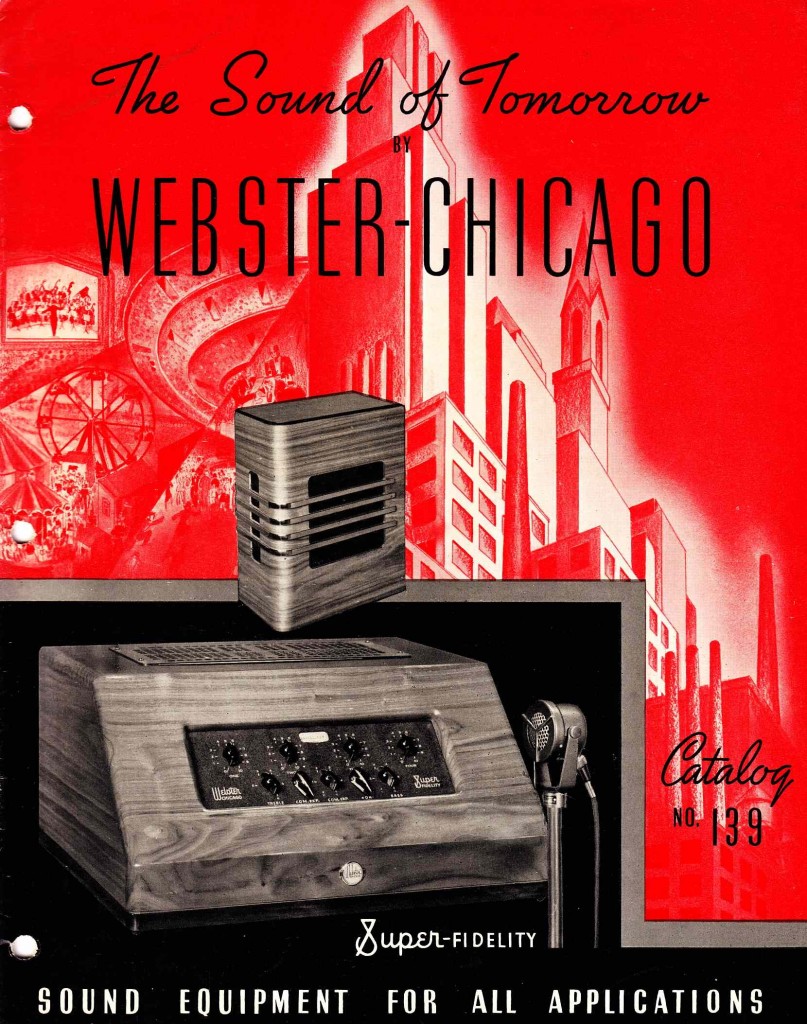 Download the 24pp 1939 Webster-Chicago Sound Systems catalog (in two parts due to size)
Download the 24pp 1939 Webster-Chicago Sound Systems catalog (in two parts due to size)
DOWNLOAD PART 1: WebsterChic_1939_1
DOWNLOAD PART 2: WebsterChic_1939_2
Products covered, with text, specs, and photos, include: Wesbter-Chicago Super-Fidelity Mixer W-4004, amplifiers W-4030, W-4070, W-4030; remote mixer controls W-903 and W-902; W-975, W-945, W-930 .W-920, W-830, W-814, W-808W-929, W-820 mixer/ amplifers; W-200 microphone matching transformer, W-1260 record changer, plus a host of speakers, intercom equipment, and microphones (appear to be re-branded Bruno, Turner, and EV units: W-1224, W-1245, W-1236, W-1242 and W-1243).
 Above: from page 2 of the catalog. The year is 1939. “Why Buy Sound Equipment? Because shouting is outmoded.” The ‘sound of tomorrow’ is electrically amplified sound. Shouting is a thing of the past. The sound of one human’s voice can now easily reach many tens of thousands of assembled individuals. The first recorded use of sound reinforcement (i.e., a PA system) was the inauguration of Warren G. Harding in 1922 (Bushnell, Ferree 2011). This was incredible technology at the time, technology that has given musicians infinite new possibilities for performnce. Technology that would also be used to devastating effect in Germany in the 1930s when one bitter man would be able to stir the passions of thousand of assembled individuals in ways that would have been impossible a mere decade early. Before the PA system: before electrically amplified sound: there were real physical limits to the dissemination of a vocal performance. That limit is no longer.
Above: from page 2 of the catalog. The year is 1939. “Why Buy Sound Equipment? Because shouting is outmoded.” The ‘sound of tomorrow’ is electrically amplified sound. Shouting is a thing of the past. The sound of one human’s voice can now easily reach many tens of thousands of assembled individuals. The first recorded use of sound reinforcement (i.e., a PA system) was the inauguration of Warren G. Harding in 1922 (Bushnell, Ferree 2011). This was incredible technology at the time, technology that has given musicians infinite new possibilities for performnce. Technology that would also be used to devastating effect in Germany in the 1930s when one bitter man would be able to stir the passions of thousand of assembled individuals in ways that would have been impossible a mere decade early. Before the PA system: before electrically amplified sound: there were real physical limits to the dissemination of a vocal performance. That limit is no longer.
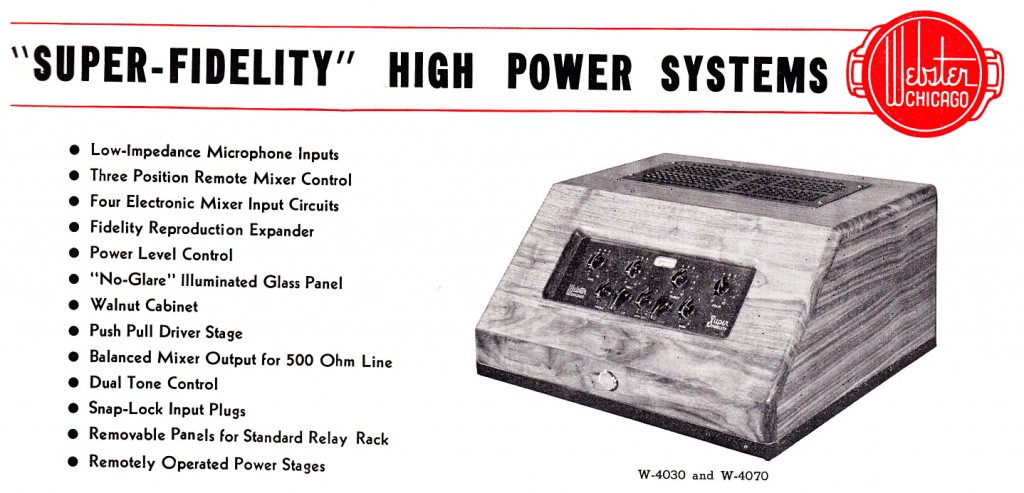 Above, Webster’s ‘super-fidelity’ high-power system intended for multi-speaker distribution in arenas ETC: no low-impedance voice-coil output is even offered on this unit. It does, however, offer two-band EQ and dynamic expansion/compression.
Above, Webster’s ‘super-fidelity’ high-power system intended for multi-speaker distribution in arenas ETC: no low-impedance voice-coil output is even offered on this unit. It does, however, offer two-band EQ and dynamic expansion/compression.
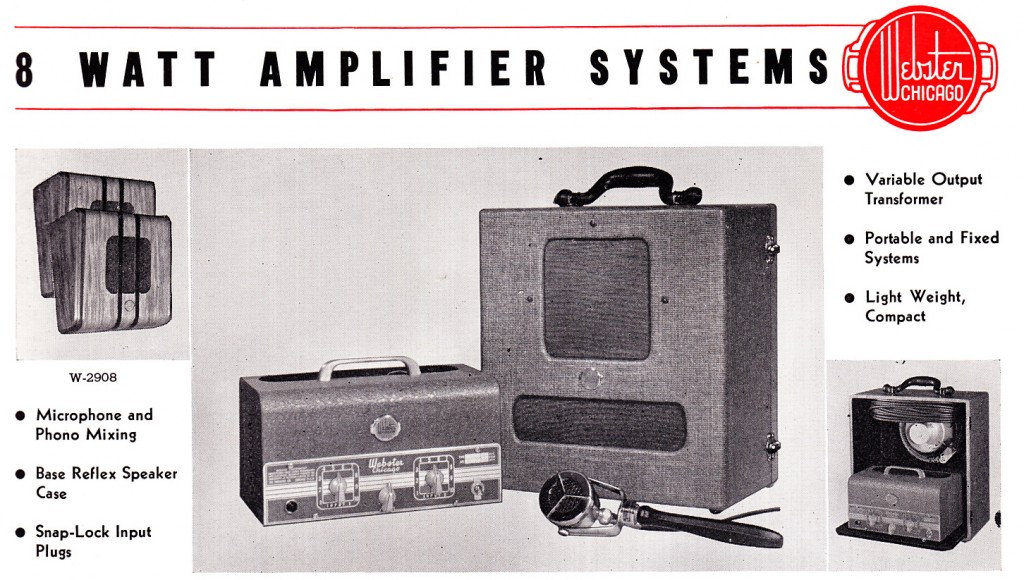 Above, Webster-Chicago’s most modest PA system, the 8-watt W-808. This was the first piece of antique audio equipment that I ever purchased: $75 at a multi-dealer antique shop on Wickenden st in Providence RI. My system came with an American D-4 dynamic mic, which I still own and which still works fine after all these decades. The amplifier and speaker worked too, although I could never figure out why there was a strong slightly off Bb bass-note that went along with everything that I played. This was several years before I had any awareness of filter caps, of course.
Above, Webster-Chicago’s most modest PA system, the 8-watt W-808. This was the first piece of antique audio equipment that I ever purchased: $75 at a multi-dealer antique shop on Wickenden st in Providence RI. My system came with an American D-4 dynamic mic, which I still own and which still works fine after all these decades. The amplifier and speaker worked too, although I could never figure out why there was a strong slightly off Bb bass-note that went along with everything that I played. This was several years before I had any awareness of filter caps, of course.
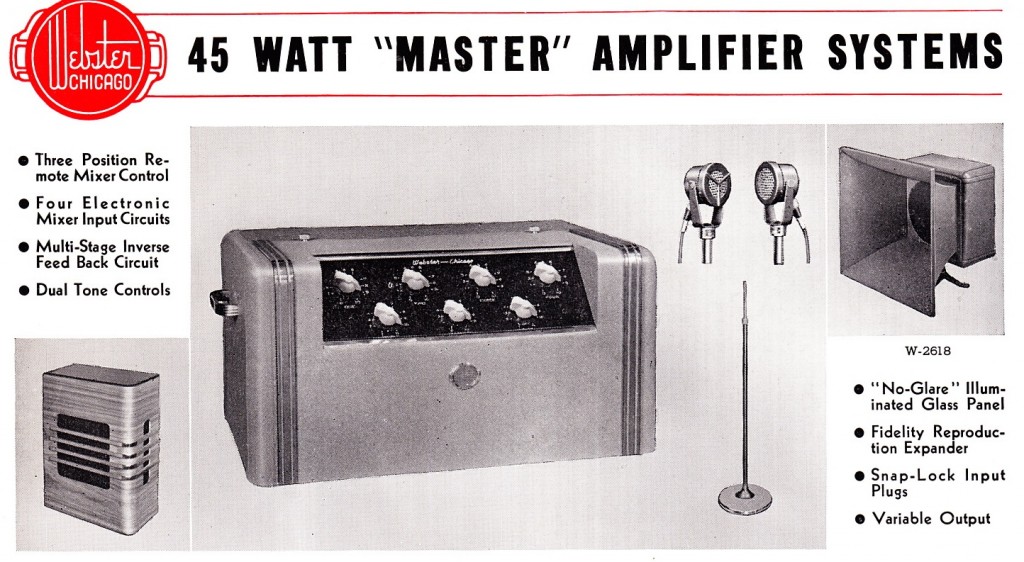
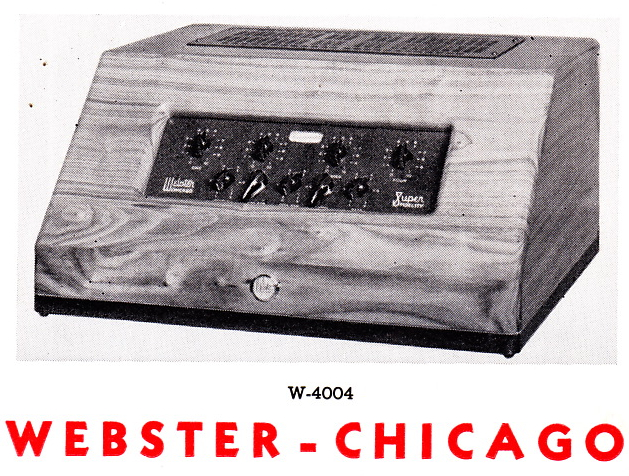
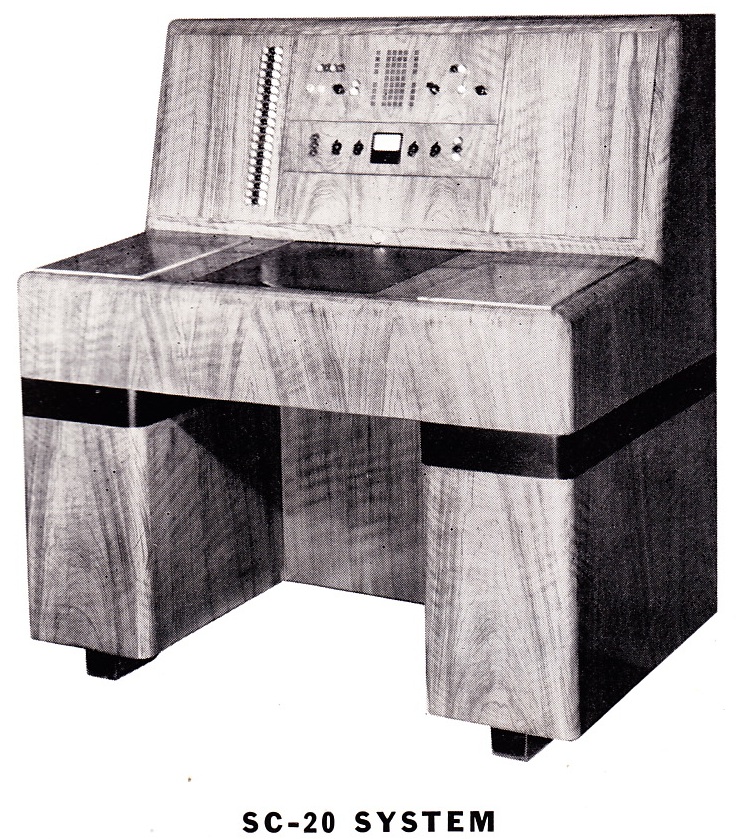
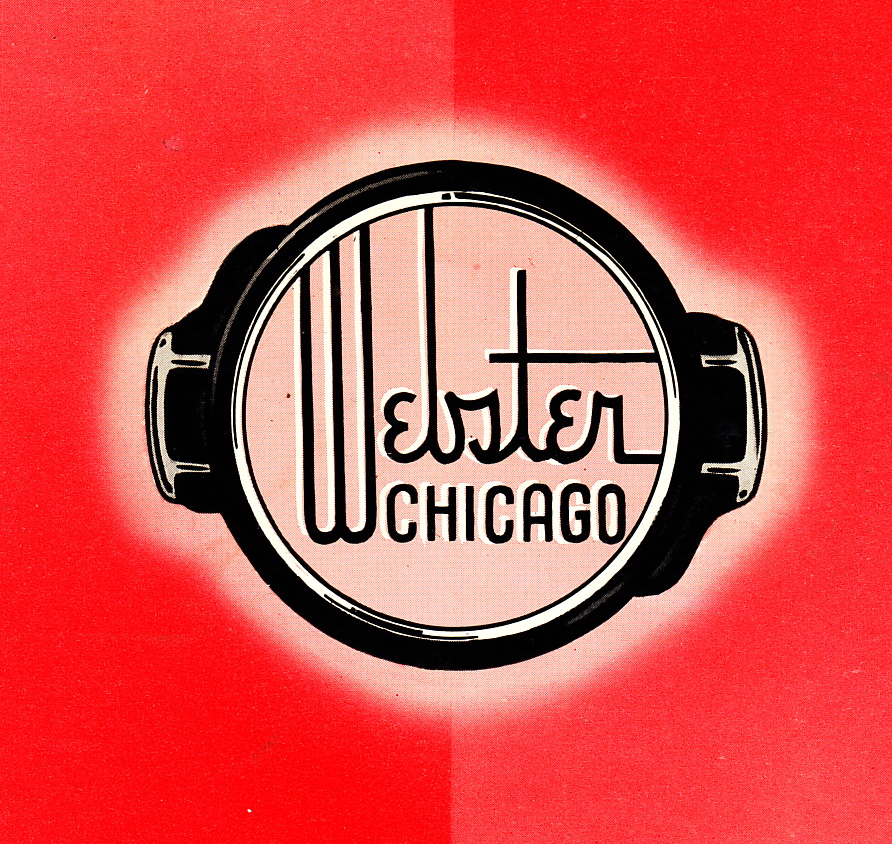
9 replies on “Webster-Chicago: Because Shouting Is Outmoded (1939)”
Great site-thanks for posting that catalog!
A while back I ran across some old glass plate negatives, some of which showed the contents of a Webster-Chicago dealer in Philadelphia, from 1938. The image quality is fantastic-serious eye candy. For anyone interested in Webster-Chicago in particular, or vintage audio equipment in general, they are worth checking out at my website (at the posted link).
Thanks for the link Mike; those photos you posted are amazing! what a great find! I encourage you all to follow the link to mike’s site.
I still see these old Webster amps at hamfests and whatnot. They can be made into a pretty good guitar amp, especially the 50s ones, which are similar looking to these but have all RC coupled circuits. Usually the original OPT will last a few months in guitar service and then fail. The power transformer will last a long time, especially if you bake it at 150 F. for a few hours to get the water out. I use a DC supply across the primary and adjust the current so it dissipates enough to heat the outside to about 130 F. as measured with an infrared thermometer.
Chris, this post is really interesting, thanks for the catalog. That little portable amp/mic/speaker rig works really well with a harmonica. You don’t quite get the Little Walter thru a Bassman effect, but it’s super-gritty and dirty sounding, real urban blues.
Mike’s link above is super-cool. I love the mandolin demonstration photos, also the trade-show floor disk recordings.
Mike Schultz has some really good stuff at http://www.uv201.com
I really like looking at the old tubes. Most of the plants they were made in weren’t that elaborate or large, and even with our excessive environmental laws I think it would be easier than people think to start a small tube plant making the tubes that are the most valuable and ironically often the simplest. Triodes like the 2A3, 300B, 50, 45 and 10 bring the stupid money, along with rectifiers and some antique types. Seeing eye types wouldn’t be that hard either-indeed, any tube made before WWII is probably fairly simple to make. Only later high perveance and multi-element miniature tubes, and a few specialized types, would be really challenging. Litton, the company that made the grid lathes and sealers is still in business!
I have a Webster Electric microphone, model SS667. I can’t find anything about it anywhere. Whenever I google, I do get items related to Shure–is this an early Shure mic? It’s in mint condition and I even have the spiral hand held pole that screws into the base.
i just found a webster w920 with all origional tubes, i wanna fire it up to see if it works, but have no idea how to hook it up! some help please! im a guitar guy so this might be saweeeeeet! plz help! coldandhomeless@yahoo.com
Caution!
Do not power up an old amplifier that has not been used for many years. They have electrolytic capacitors which have a limited life. If you power up the amplifier, serious damage may occur.
Check out all the electrolytic capacitors first. Probably most, or all, of them will need to be replaced. After you are sure that all the electrolytic capacitors are OK, you can try powering up the amplifier while taking precautions to be sure that it will not draw too much current and damage a component. One trick is to connect it in series with a light bulb of appropriate size, one which has a rating which would cause it to draw about twice as much current as the amplifier is expected to draw; it will limit the current to prevent serious damage in case there is a problem. A tungsten filament when hot has about 20 times the resistance as when it is cold. If everything is OK, the light bulb may immediately become slightly bright, then dimmer, then gradually brighter again. The amplifier should work, but not quite normally since the light bulb in series with it will reduce the voltage. If everything seems OK, then power the amplifier normally.
Need help… desperate!! I have a Webster Chicago amp out of a Seeburg Selectophone Jukebox, circa: 1932-1935 and need a schematic for the amp. It is a Type: SB5 serial number A 6255.
Does anybody have a suggestion? I have tried all the Jukebox repair facilities with no luck. As recommended, I’m not going to fire it up until I change the capacitors, but I can’t read the values on the old square paper ones. The wax ones I can read easily.